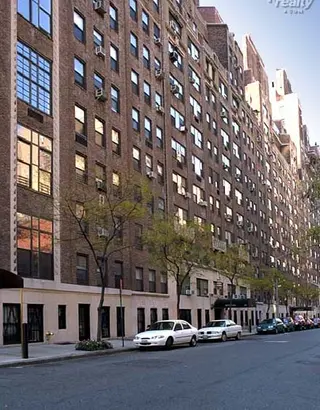 Carter Horsley
Carter HorsleyDec 23, 2011
Carter's Review
This development of five buildings was designed by Emery Roth for Bing & Bing, one of the city's premier builders of upper-middle-class housing in the 1920's and 1930's. The richly textured reddish salmon brick façades and sparse but good Art Deco detailing added significantly to the ambiance of the "Beekman Place" area. The four 10-story buildings on 52nd Street are similar in height and general façade treatment, but each is slightly different. The effect is quite massive and almost fortress-like, particularly since they are an imposing prelude to River House, perhaps the city's most glamorous apartment tower, at the river end of the street. The buildings are distinctive, moreover, because many apartments have very tall ceilings and windows and, indeed, are among the city's few "studio" buildings of their era. The building at 424 East 52nd Street, in fact, is very, very distinguished with a bank of enormous windows on either side of a central façade section whose fenestration pattern is very unusual in its alternating window sizes. Its 80 units were converted to cooperatives in 1987. The apartments, surprisingly, are relatively modest and do not contain many rooms, but the living rooms at 424 East 52nd Street are one-and-half-stories high and those at 400 East 52nd Street are sunken. The first building to be completed was 434 East 52nd Street in 1928. 424 East 52nd Street and 433 East 51st Street were completed in 1930 and 400, a 462-unit building, and 414 East 52nd Street were completed in 1931. The 52nd Street buildings, Steven Ruttenbaum observed in his book, "Mansions In The Sky, The Skyscraper Palazzi of Emery Roth," Balsam Press, Inc., 1986, are each "embellished with fanciful iron loggias and window grilles executed in unique Art Deco motifs with voluptuous Art Deco terra-cotta trim....The Southgate complex is enlivened with highly textured, three-dimensional forms that provide much in the way of visual delight. It was unusual for one architect to be given the opportunity to mold almost an entire side street into a unified architectural composition, and Roth responded to the challenge by creating Manhattan's most distinctive residential Art Deco ensemble." The Southgate complex, originally a rental project but subsequently converted to cooperatives, was preceded by the larger Tudor City complex several blocks to the south and a few other similar projects exist in the city, but are rare.

- Co-op built in 1931
- 6 apartments currently for sale ($415K to $1.65M)
- Located in Beekman/Sutton Place
- 460 total apartments 460 total apartments
- 10 recent sales ($349K to $1.8M)
- Doorman
- Pets Allowed

 6sqft delivers the latest on real estate, architecture, and design, straight from New York City.
6sqft delivers the latest on real estate, architecture, and design, straight from New York City.
